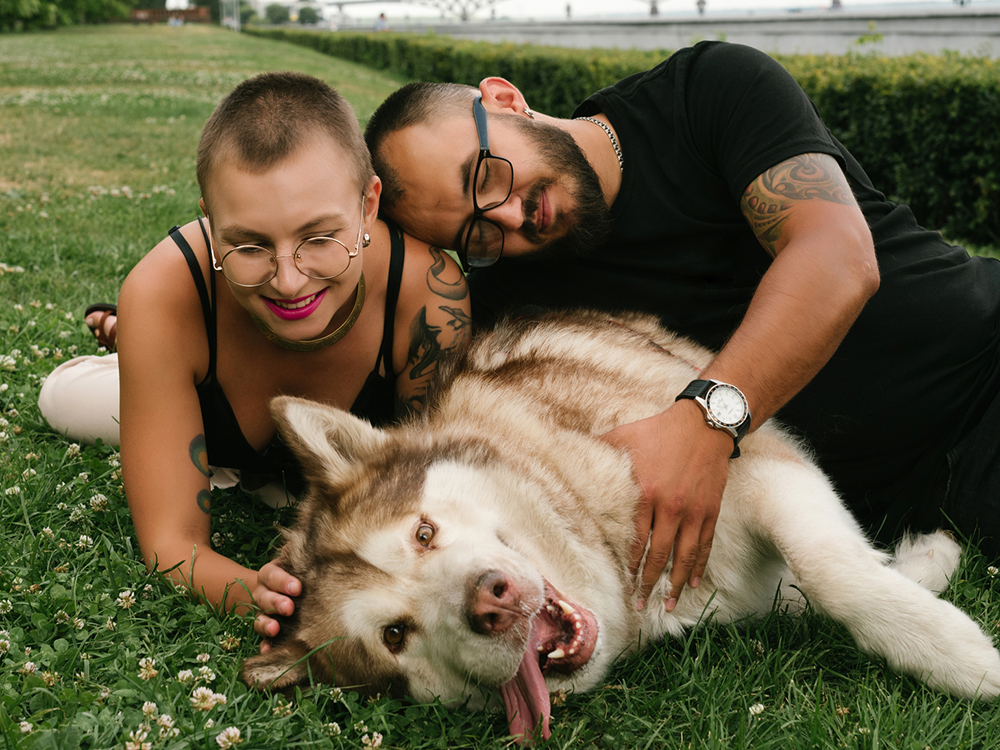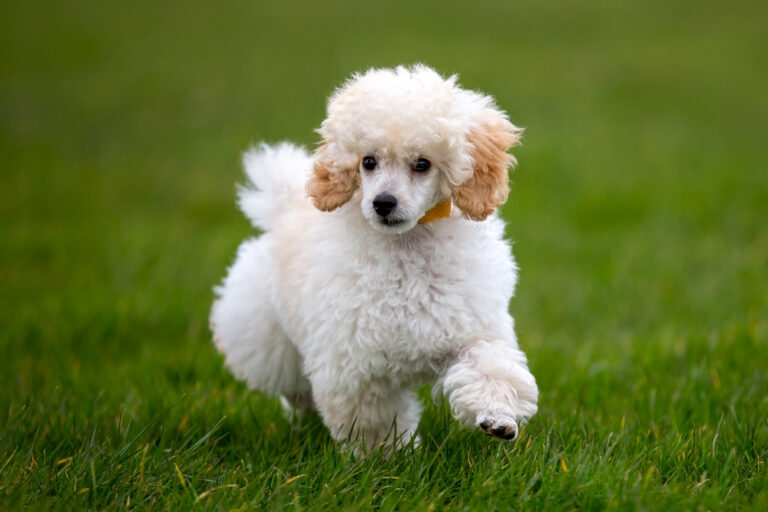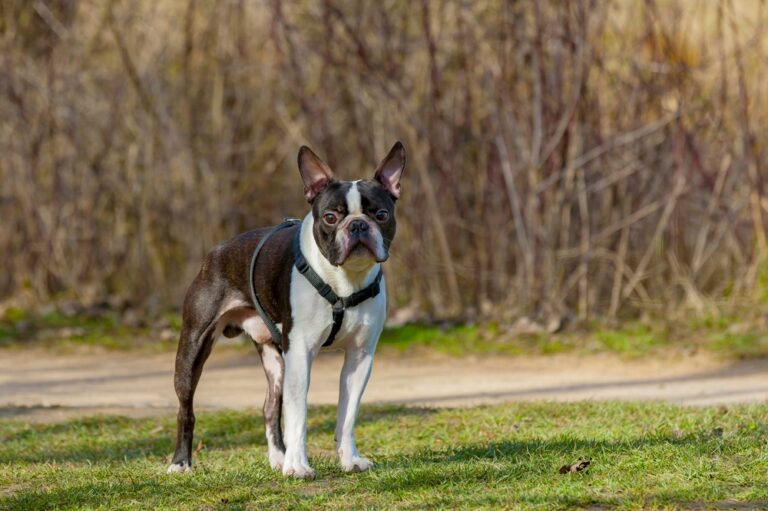- June 20, 2023
Adopt-a-Pet.com Blog 15 Large Dog Breeds That Make The Best Pets


When it comes to finding the perfect dog, size does matter. While tiny dogs have their appeal, big dogs bring unique qualities to the table, like offering a feeling of security, the athleticism to go on long runs with you, and plenty of love and loyalty.
To be considered “large” and in charge, a dog breed has to weigh between 50 to 100 pounds as an adult. Height is a factor as well — a very long, fat Dachshund doesn’t count. Large breeds typically stand at least 22 inches tall at the shoulder, but that varies depending on each breed’s average. A lot of large breeds come from a line of working dogs, which is why their strength and girth are so important. They have the muscle to do a job, the determination to see it through, and the imposing stature to intimidate anyone who doubts them (or who tries to steal your sheep).
Let’s explore the world of large-breed dogs and highlight some of the best options for families and individuals looking to add a new member to their pack.
15 Large Dog Breeds

Edgardo Mota – Wirestock / AdobeStock
Akita
The Akita originated in Japan and typically weigh between 90-130 pounds if male, and 65-110 pounds if female. The big dog breed is quite sturdy and muscular, with a thick double coat that comes in many shades, but most frequently is white, brindle, and red. Akitas are particularly known for their loyalty and devotion to their families — strangers are not their favorite, nor are other pets.
That said, they are also independent and smart, so they require consistent training to be at their best. Most Akitas will be comfortable with their “pack” and kids they know from a young age. Akitas like to play and go for walks, but are not marathon runners. If they’re getting the care they need, there’s no need to run them for hours outside.

Demetr White / Stocksy
Doberman Pinscher
The Doberman Pinscher first became popular in Germany in the late 19th century. They typically weigh between 75-100 pounds and have a distinctive, sleek, and muscular build and a short but silky coat. Aerodynamic is the word that comes to mind when you see a Doberman.
Dobermans are associated with the negative stereotype of being tough watchdogs and protectors, but these big dogs can actually be pretty dopey. Dobermans need to feel secure with their people and good, early socialization and training to be comfortable with strangers.

VioletaStoimenova / iStock
Old English Sheepdogs
Everyone knows the Old English Sheepdog’s shaggy coat and adorable face, probably from some version of Peter Pan where one of these gentle giants was the “nanny dog” for a group of rowdy kids. They grow to be about 100 pounds, but that’s 100 pounds of total sweetheart.
Though sheepdogs are easy to train, they can be playfully stubborn, probably because they’re also so smart. Expect some barking because these large-breed dogs are alert to intruders. Old English Sheepdogs are not high-energy dogs, but they need regular walks and play as well as a healthy diet, or they might get a bit chunky. It can be hard to tell when that happens, though, because of their thick, long coat. Brush them so you can tell the difference!

MOAimage / Shutterstock
Collie
Collies are on the smaller side of larger dogs, coming in at around 75 pounds at their biggest, but as proud working dogs, they pack a lot of power. They were bred to herd sheep, so expect to have them at your heels at all times.
Collies make excellent family pets and are good with children and other animals. Their favorite thing is getting told what to do, so they’re extremely trainable and love games. Make sure your Collie gets regular exercise and lots of mental stimulation if you don’t have a herd of sheep for them to boss around.

PROMA1 / Shutterstock
Airedale Terrier
Airedale Terriers were originally bred in England as hunting dogs for small game and rats. Yum. They’re big muscular dogs who weigh between 50 and 65 pounds and have wiry, dense coats that are typically tan with black markings. Airedale Terriers are quite friendly, with outgoing personalities. They’re considered great family pets and like children.
As hunters, they like agility tests and other tasks that allow them to sniff, chase, track, and show off all their skills. They are definitely high-energy and need to get in those walks, runs, and some playing in the yard for optimal mental health.

Mauro Grigollo/Stocksy
American Staffordshire Terrier
Like many terriers, the American Staffordshire Terrier, sometimes called the AmStaff, was bred to work, but theirs was a nasty job — bull-baiting and dog fighting. Of course, these large breed dogs (who weigh between 50 to 70 pounds) are naturally very strong and athletic. They have a strong prey drive, but are also smart and eager to please.
These dogs are truly people-oriented companions who like kids, but need early socialization and training when introduced to other small pets. AmStaffs also need a lot of activity and daily exercise and are happiest in homes with yards or access to outdoor space. They do have a short easy-to-maintain coat, so that’s a plus.

Grisha Bruev / Shutterstock
Giant Schnauzer
The Giant Schnauzer, originally from Germany, was bred to be a livestock guardian, and they have been known to herd a lamb or two. They grow thick, rough coats and males can weigh in at about 105 pounds, while females are typically around 85 pounds.
They’re very protective and loyal and will bark whenever they perceive a potential threat, which is often. These big dogs need a lot of daily exercise and are great with agility tasks, so don’t keep them shut inside all day. They once roamed the fields and would love to do so again at any opportunity.

Bo Bo / Stocksy
Alaskan Malamute
The Alaskan Malamute was bred for working hard in the cold, hauling heavy freight and sleds in the arctic regions. They’re super strong and have a dense coat to keep them warm, so they prefer a cooler climate.
Malamutes make excellent companions for those looking for a large breed dog. They’re outgoing and affectionate and have a tendency to howl like a Husky when trying to communicate. That means apartment living is probably not the best choice for a Malamute, at least if you don’t want to be hated by your neighbors, but they are good guard dogs for more remote properties.

Lucas Ottone / Stocksy
Greyhound
The Greyhound is a tall noodle of a dog bred for hunting and racing, with a lean and athletic build and a short, smooth coat. Despite their great speed, Greyhounds are known for having chill demeanors, which makes them bad guard dogs; they tend to be avoidant rather than confrontational around strangers. Greyhounds make great family pets for those looking for a large dog, however.
Though they obviously have the capacity for bursts of energy, and moderate walks and runs are important for their health, Greyhounds love lounging on the couch with you and sleeping whenever they can.

Samantha Gehrmann /Stocksy
German Shepherd
The German Shepherd is a well-known breed often associated with law enforcement in the United States. However, these large dogs were originally bred for the gentler occupation of guarding herds of sheep. These loyal large-breed dogs weigh up to 90 pounds on average.
While they are quite strong and visually intimidating, they can also be very loving, loyal, and affectionate with their pet parents. They tend to be protective (duh) and wary of strangers, so careful socialization is a must. They need long walks and play and are great at tasks that challenge their skills with agility, tracking, and protection. Don’t forget plenty of one-on-one grooming time; those coats are thick, and they shed a lot.

Andriy Bezuglov / Stocksy
Boxer
The Boxer is an athletic working breed that weighs between 50-70 pounds and sports a short, smooth coat. They have energetic personalities and like children and other pets if introduced to them respectfully.
Boxers like to clown around and almost seem to have a sense of humor, but are alert for intruders when it counts … like when the mailman arrives. Like these other big dog breeds, Boxers need a lot of activity and are happiest in homes with outdoor space.

Tanya Consaul Photography / Shutterstock
Chesapeake Bay Retriever
The Chesapeake Bay Retriever is a hunting dog who once specialized in waterfowl retrieval in the Chesapeake Bay area (though they could probably be convinced to do it elsewhere, if you need waterfowl retrieval in your neighborhood). These large breed dogs weigh around 80 pounds; they are sturdy guys with a short, thick coat that is usually brown or tan.
This breed is considered independent and confident, with strong hunting instincts and a love of the water. They enjoy swimming, playing fetch, and other activities that involve retrieving — it’s in the name! They also love training focused on obedience, agility, and other challenges. Keep them busy and well-brushed, and you’ll have a healthy, happy friend.

Studio Canvia / Stocksy
Dalmatian
The Dalmatian has a spotted black and white coat so famously beautiful, a whole movie was made about someone wanting to make Dalmatian puppies into a coat. Dalmatians are also known as the firehouse mascot of choice, and they once had a place in culture as a circus performer. Clearly, this is a breed with a lot of mythology.
While the Dalmatian is not the largest dog breed (in fact, they tend to run more medium-sized), some Dalmatians can get as heavy as 75 pounds. They are outgoing, playful, and good with families, including kids. Exercise-wise, Dalmatians love to run, and need lots of outdoor stimulation. That beautiful coat sheds heavily, so expect to put in the time to groom this famous breed.

Jasmina007/iStock
Bernese Mountain Dog
The Bernese Mountain Dog has a distinctive black, white, and rust-red tri-colored coat and was originally bred in Switzerland. They’re gentle and good at climbing hills, which is very useful for a family on a mountainside, if you know one. These hefty pups weigh around 110 pounds and are pretty easy-going but will bark to alert you of anything they find suspicious.
Though these dogs are big and playful, their exercise needs are fairly moderate, and they enjoy a good hang out as much as a walk. However, they don’t love small spaces and would benefit from a yard. That yard better be someplace cool because they can get pretty miserable in hot weather and need shade to cool off.

Kara Riley / Stocksy
German Wirehaired Pointer
German Wirehaired Pointers are known for their hunting skills, athleticism, and being friendly. Built for endurance, they’re simultaneously lean and swole, and they’re smart and friendly, but do have a high prey drive and will almost certainly chase small animals without some training teaching them not to.
The German Wirehaired Pointer is a medium-large dog breed weighing 60 to 70 pounds and needs lots of exercise. They’re especially known as runners and enjoy hiking, swimming, hunting, and tracking. Give them lots of attention, activity, and space to roam, and they’ll do great.
Thinking About Adopting a Large-Breed Dog?
Large breed dogs aren’t for everyone because most have specific needs to maintain good health and well-being. If you’re considering adopting a large breed dog, here are a few things to consider.
Do you have enough space?
Space is probably the most obvious issue: Some large breed dogs are fine with a moderate exercise routine, but even they prefer more square footage to feel comfortable. Small apartments aren’t a great choice for them, or you. Preferably, a large breed would live in a house with a yard they can play in.
Big dogs eat a lot of food.
For diet, large breeds often have a slower metabolism and can be prone to obesity; they need high-quality food to keep them at a healthy weight, which a vet can help you choose. They also eat a lot, so be prepared to stock up on the kibble.
Can you provide them enough exercise?
Most large breeds need more exercise than smaller dogs and often have a lot of energy. If you don’t have the time or physical fortitude to walk, run, or play with them, you might be setting yourself up for disaster. An unhappy, unstimulated, and under-exercised dog can get destructive, and a BIG dog can quickly destroy a whole lot.
Some Large Dogs Have Health Issues.
One downside to their large size is the health issues associated with heavier weights and a bigger build.
Large breeds are often prone to joint problems like hip dysplasia or arthritis, so protect their joint health via a diet that supports joints combined with strengthening exercise that doesn’t put excessive stress on their knees and hips.
Large breed dogs have a higher risk of developing bloat, which is a life-threatening condition that occurs when the stomach twists and traps gas inside. Be aware of the signs and causes of bloat for your pup.
Large breeds are also more susceptible to cardiac issues such as dilated cardiomyopathy, a condition that affects the heart’s ability to pump blood effectively, and they may have a higher risk of developing certain types of cancer.
Sadly, the lifespan of a large breed dog is shorter on average compared to smaller dogs. However, that can really vary from breed to breed, and with proper care and awareness of potential health issues, large breed dogs can live long and healthy lives.
References
https://caes.ucdavis.edu/news/articles/2014/03/purebred-dogs-may-face-health-challenges-1
https://www.acvs.org/small-animal/canine-hip-dysplasia
https://hospital.vetmed.wsu.edu/2021/06/28/hypothyroidism-in-dogs/
https://www.crossroadsanimalhospital.ca/big-dog-may-likely-develop-health-problems/
https://www.foundanimals.org/how-to-care-for-large-dogs/
https://pursuit.unimelb.edu.au/articles/why-do-small-dogs-live-longer-than-big-dogs
https://phys.org/news/2020-03-small-dogs-longer-big.html
https://vcahospitals.com/know-your-pet/bloat-gastric-dilatation-and-volvulus-in-dogs
Tags
What do you think?
Related Articles

New Puppy Checklist: Gear You’ll Need for Your New Dog
Getting a new puppy is really exciting, but before you welcome them home, it’s important to prepare your space for them. Since puppies need a

How Big Do Mini Poodles Get? Vet Reviewed Average Weight & Growth Chart – Dogster
The information is current and up-to-date in accordance with the latest veterinarian research. Learn more » When you buy a Miniature Poodle, you might not

Can Police Dogs Smell Nicotine? Vet Verified Facts & Info – Dogster
The information is current and up-to-date in accordance with the latest veterinarian research. Learn more » While cigarette sales have been declining steadily for decades,

How Old Is 5 in Dog Years? Vet-Approved Guide to Each Size of Dog – Dogster
The information is current and up-to-date in accordance with the latest veterinarian research. Learn more » A common method for calculating a dog’s age is

